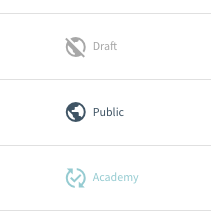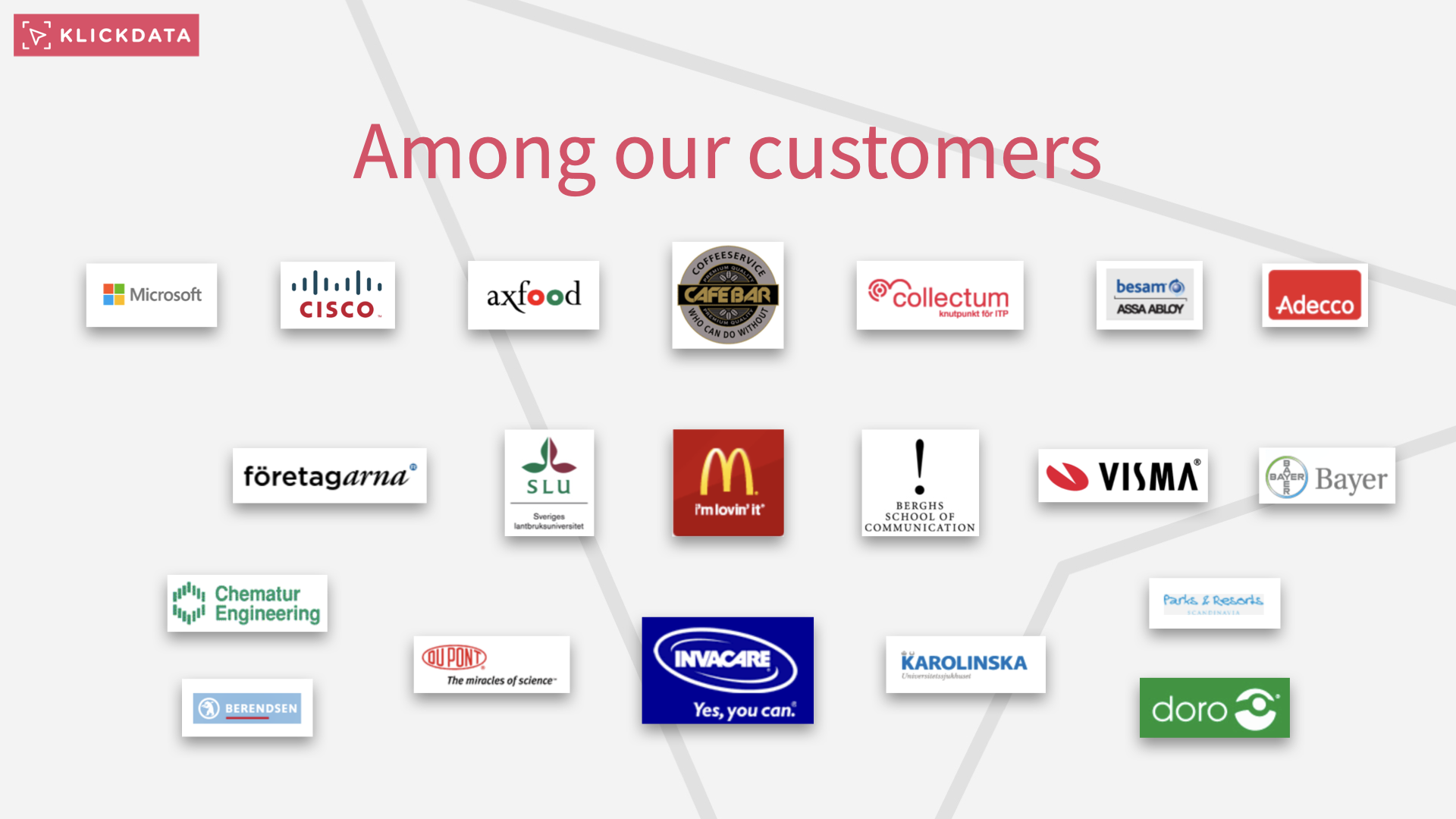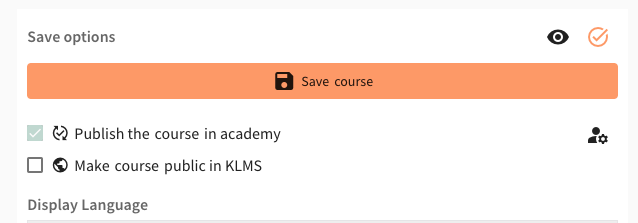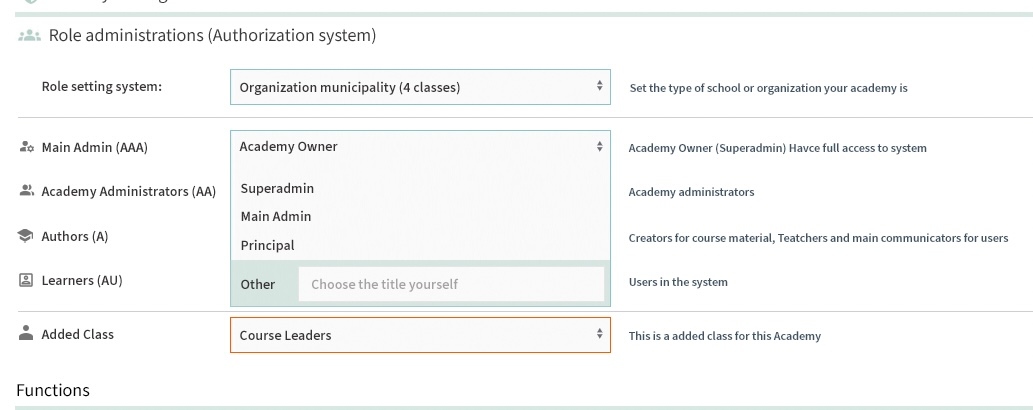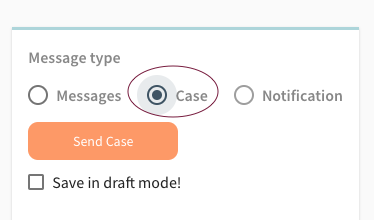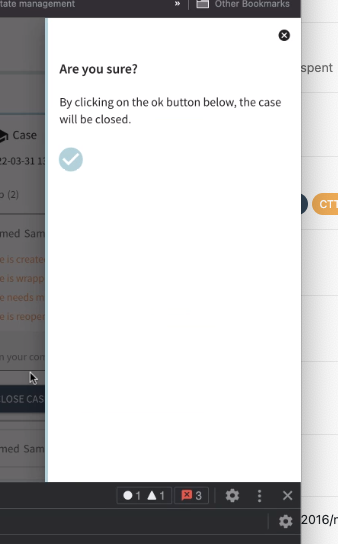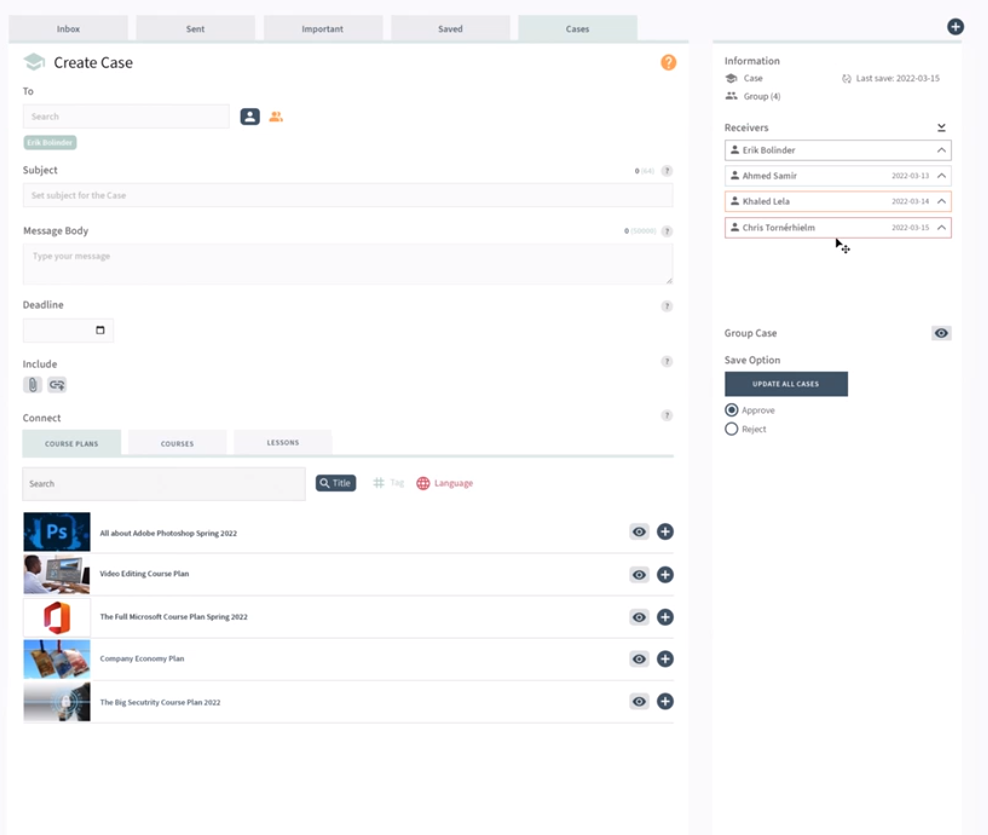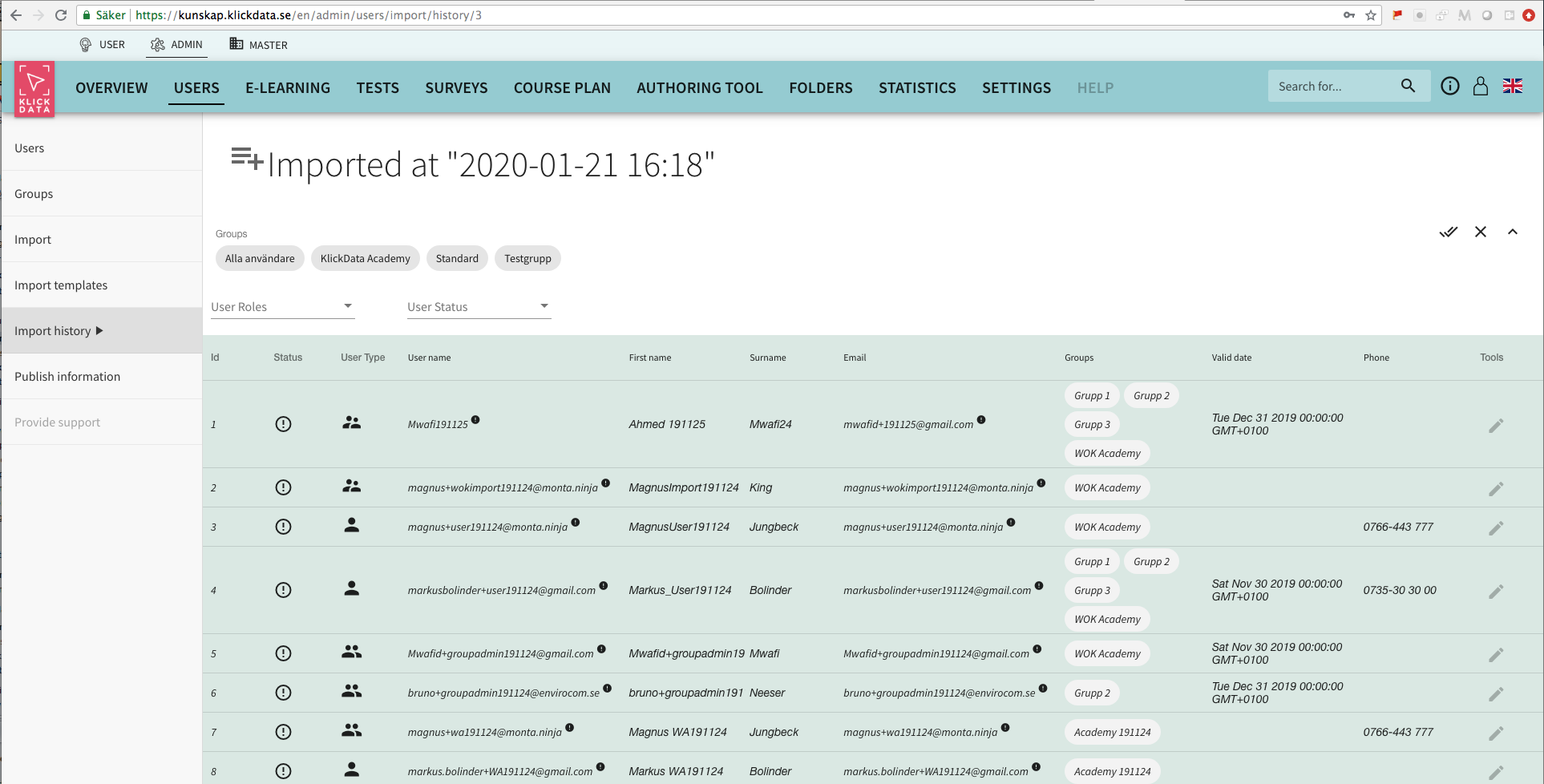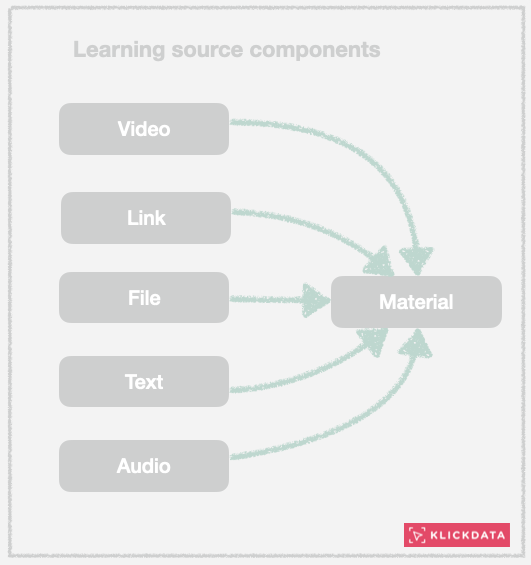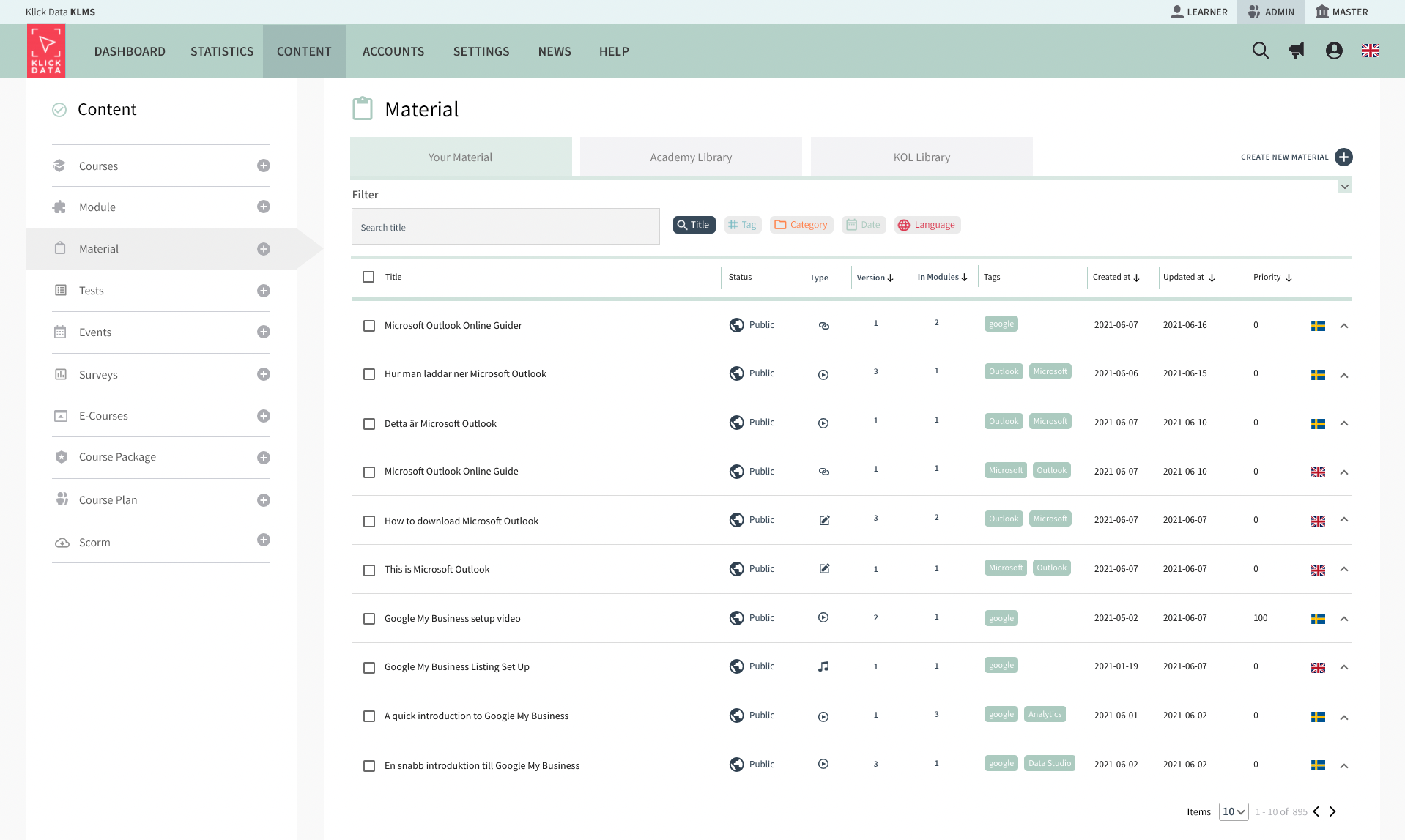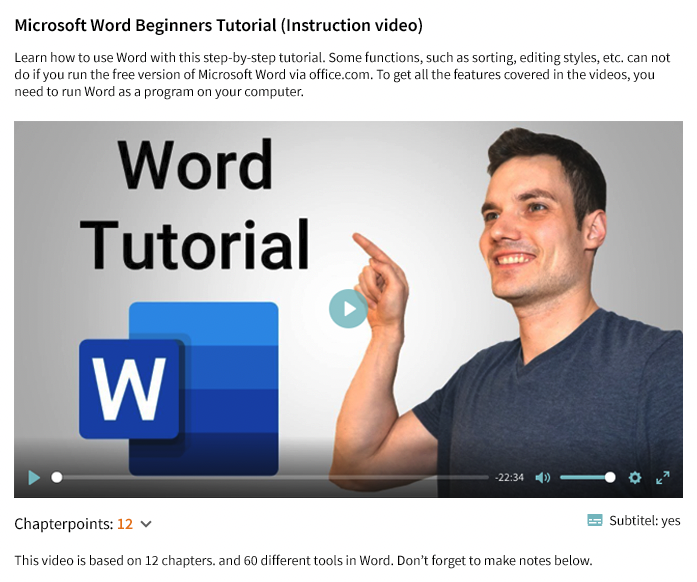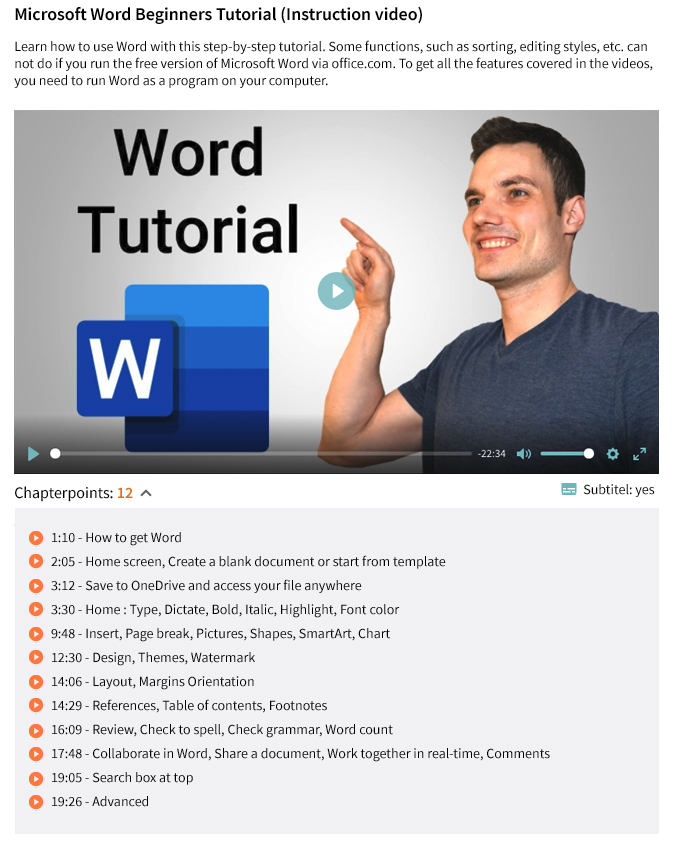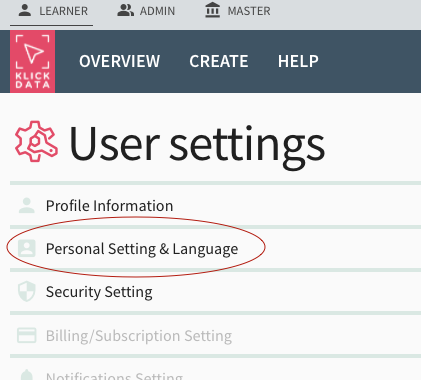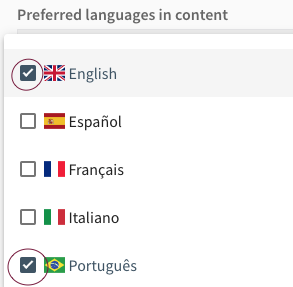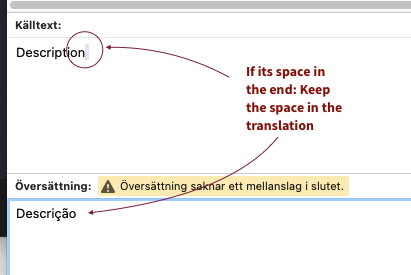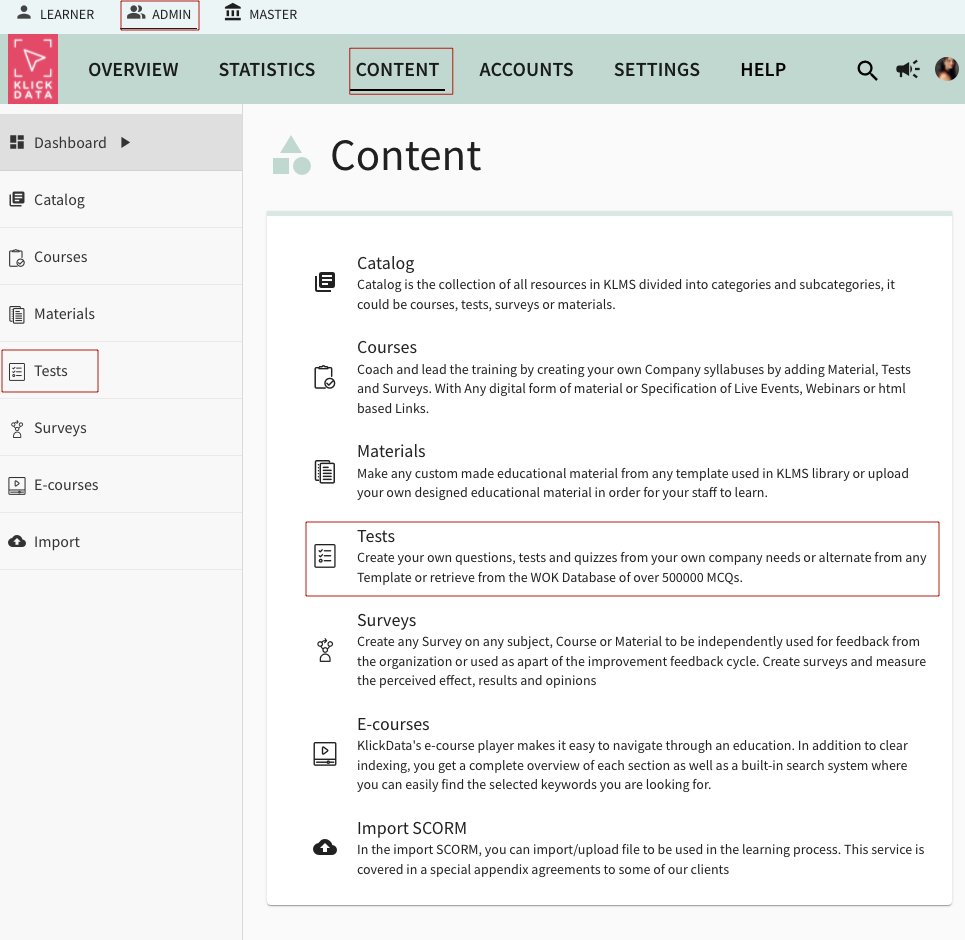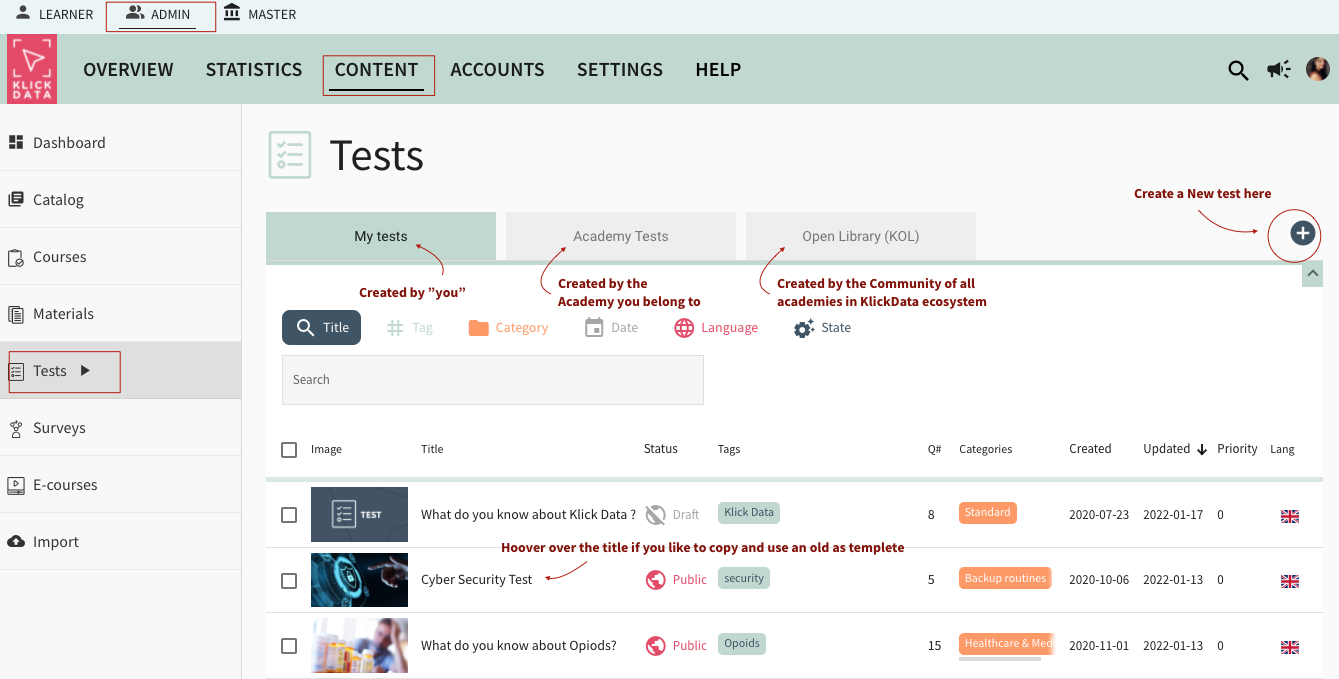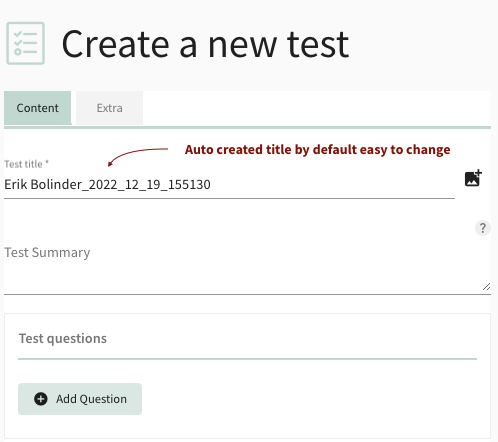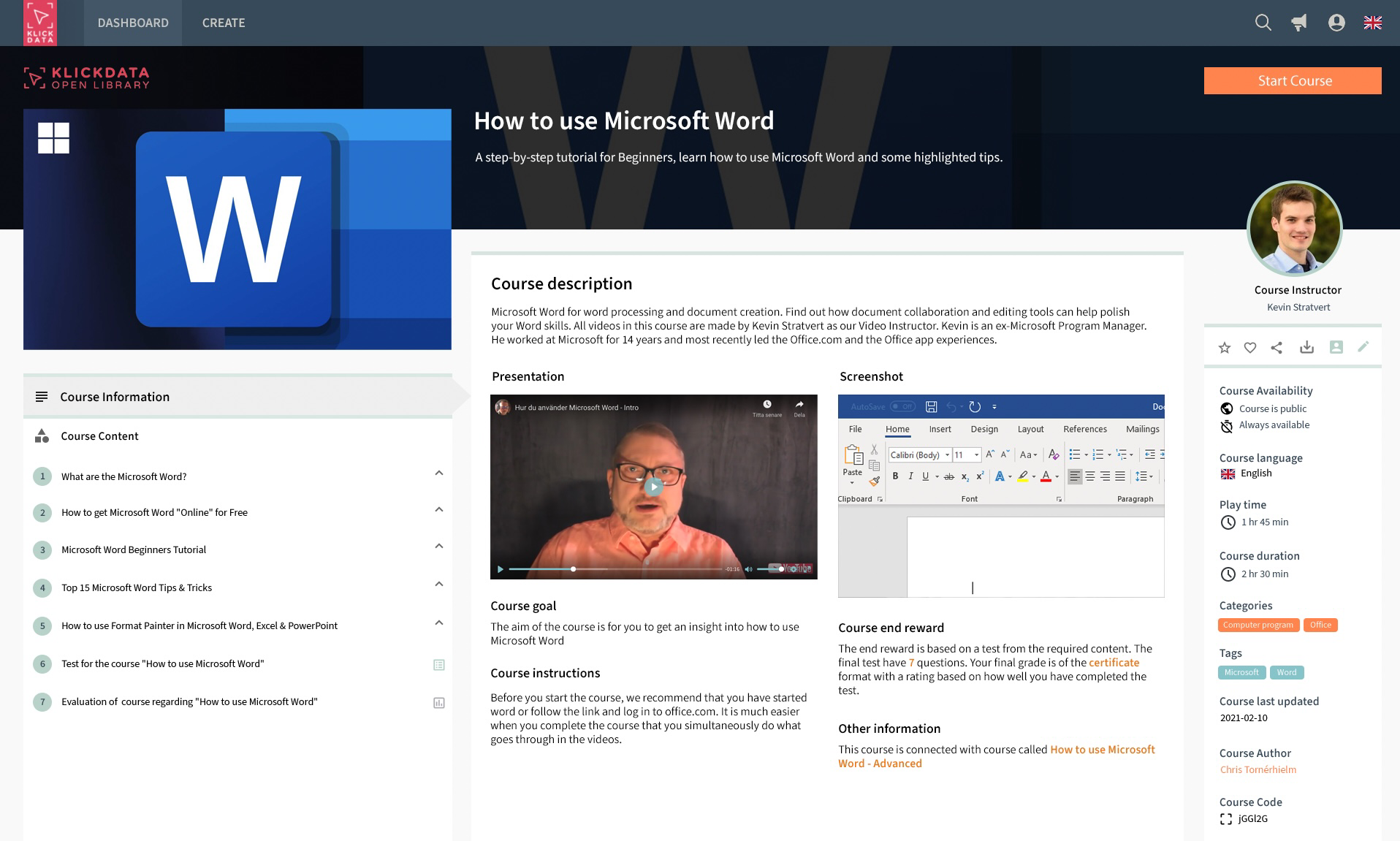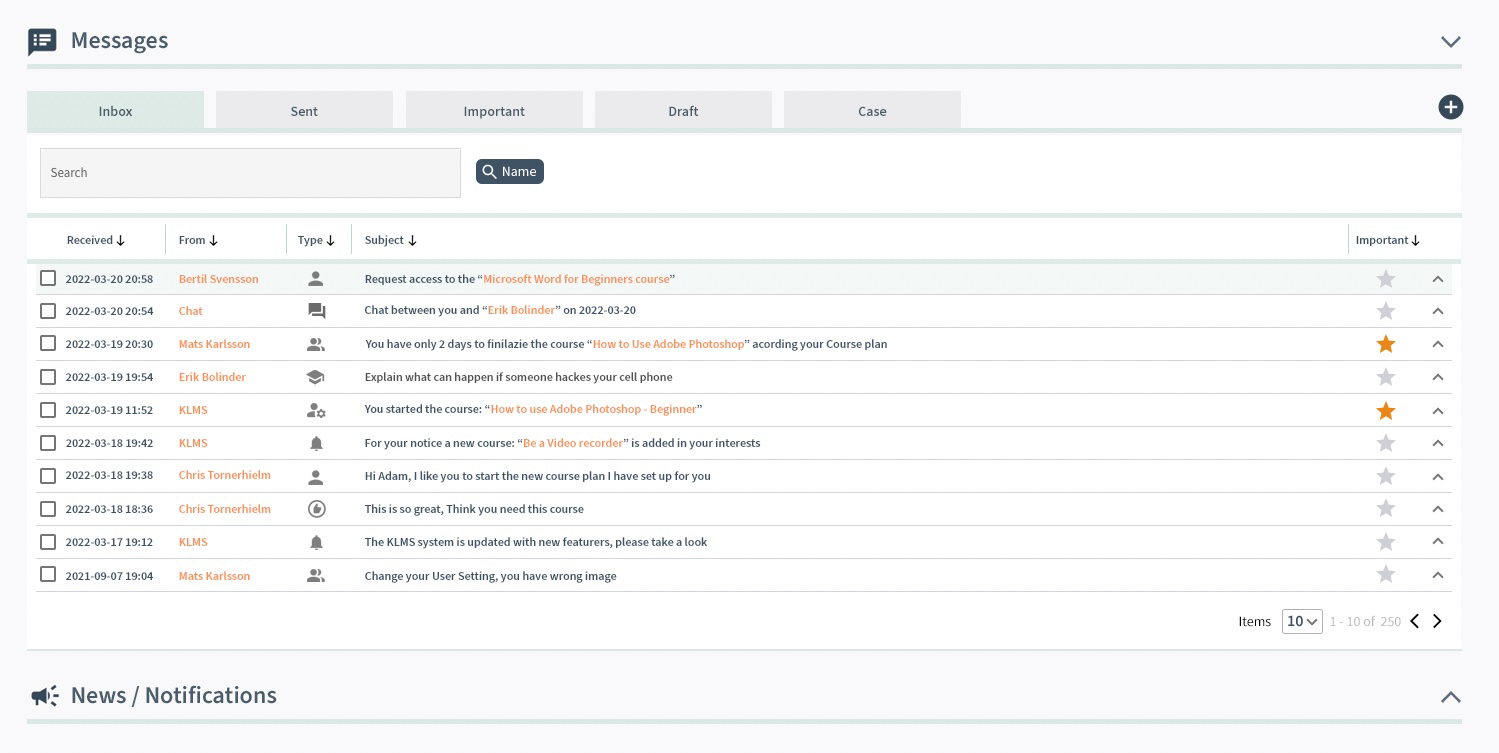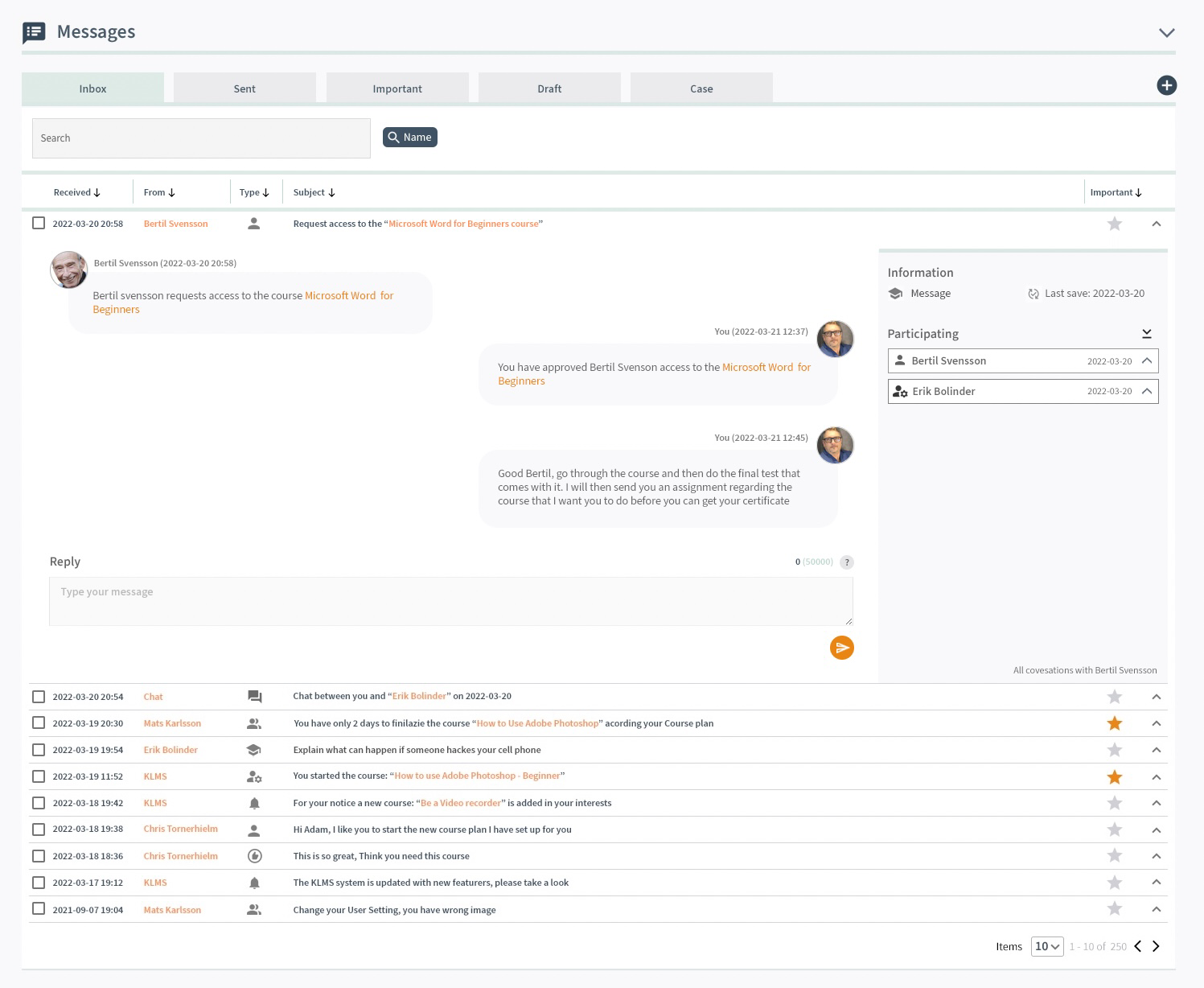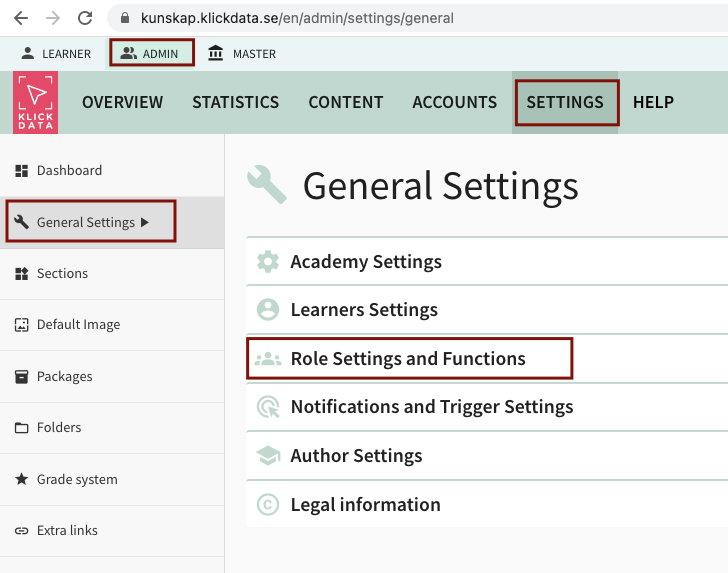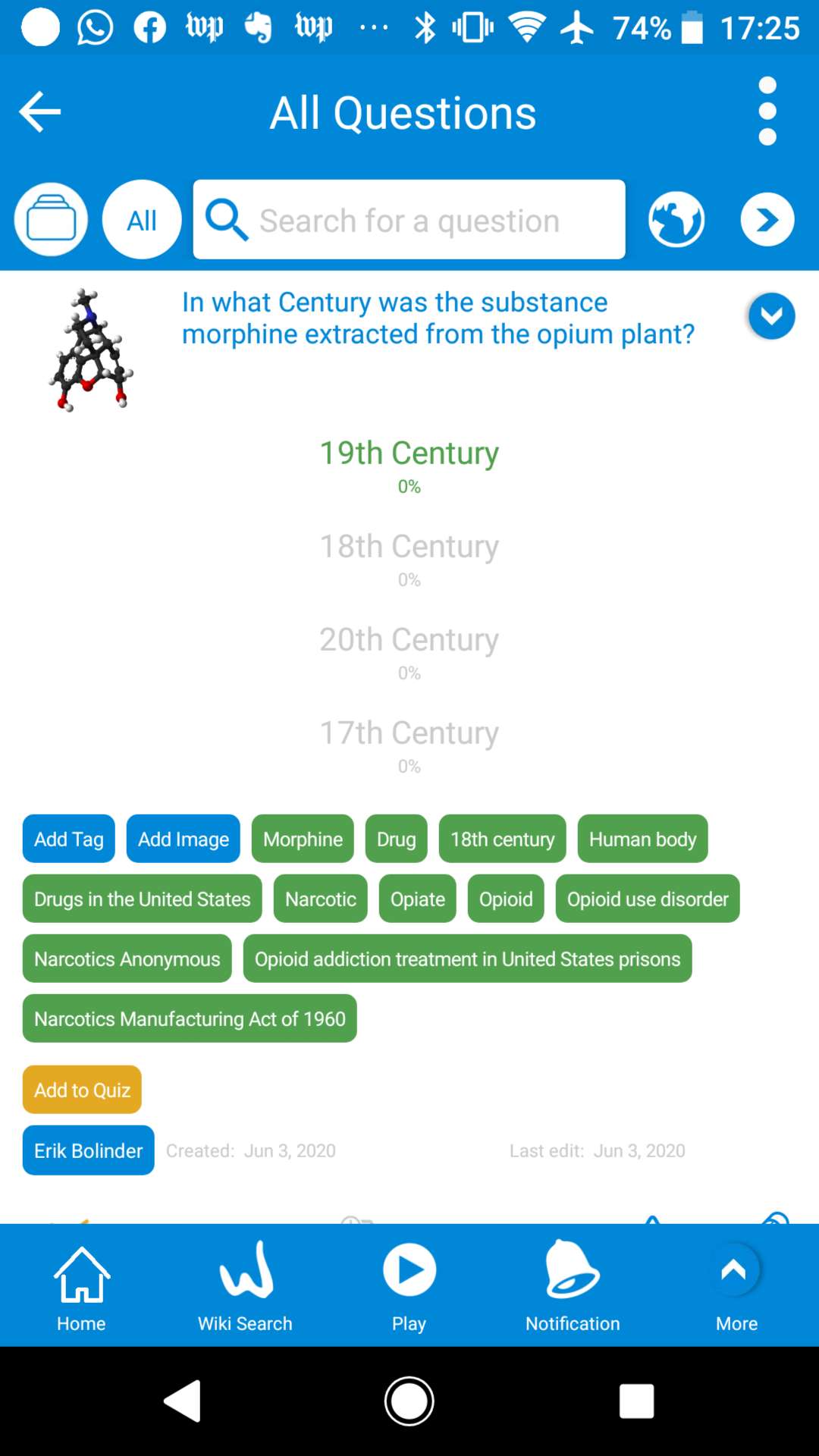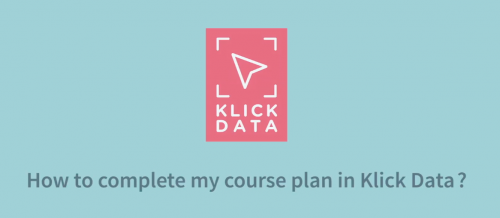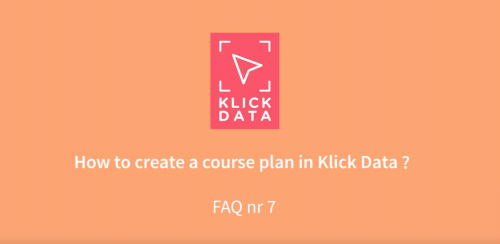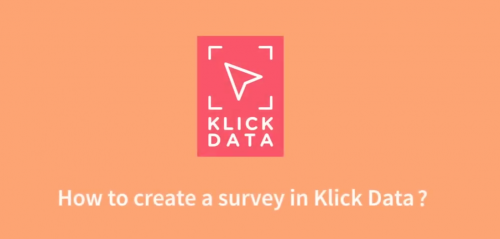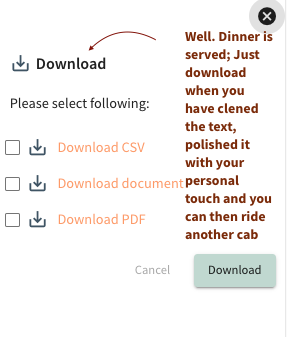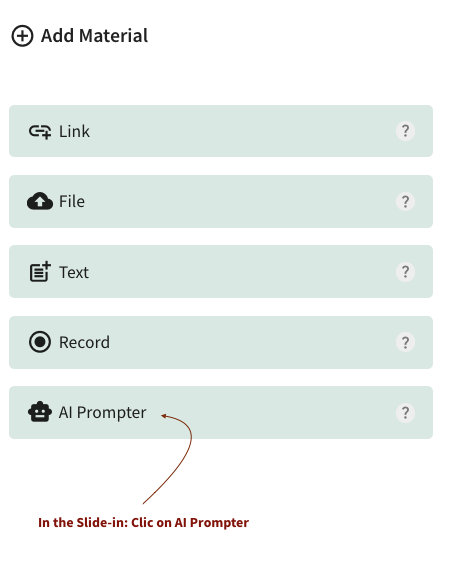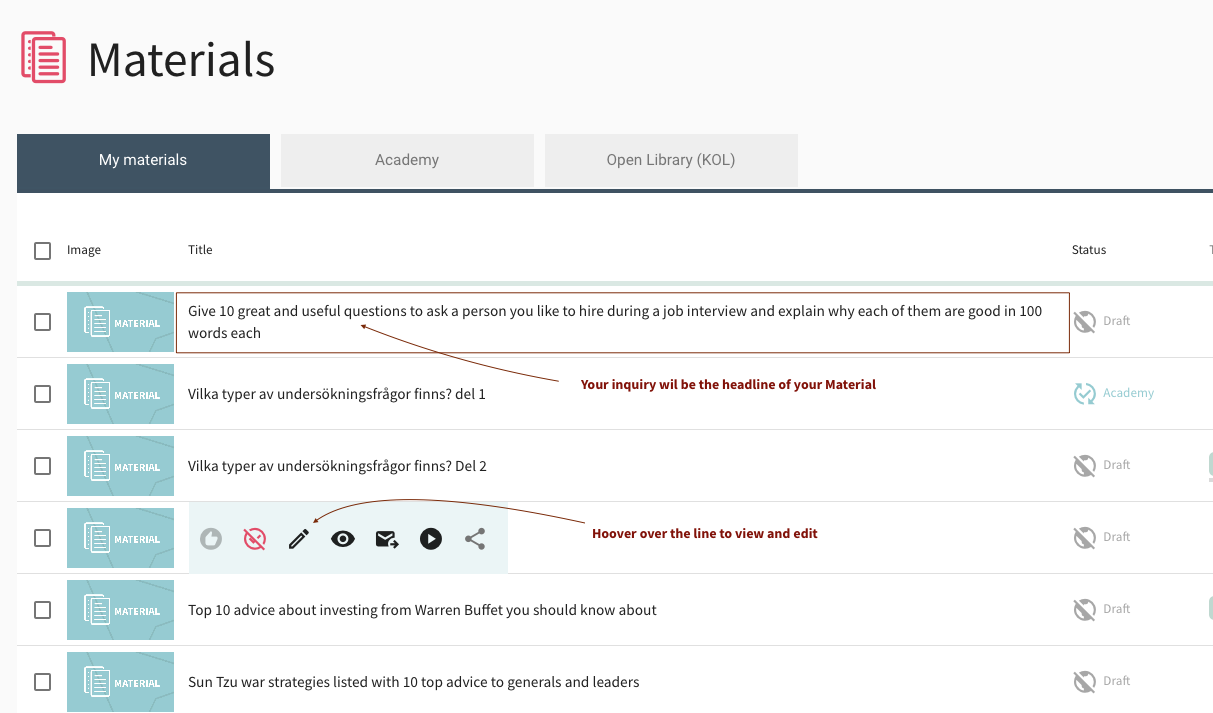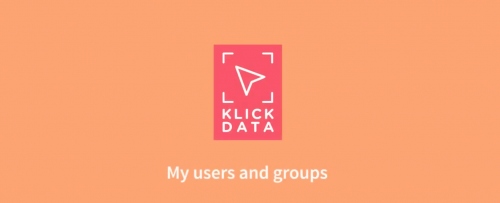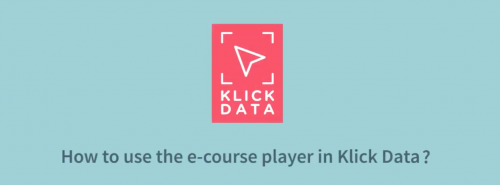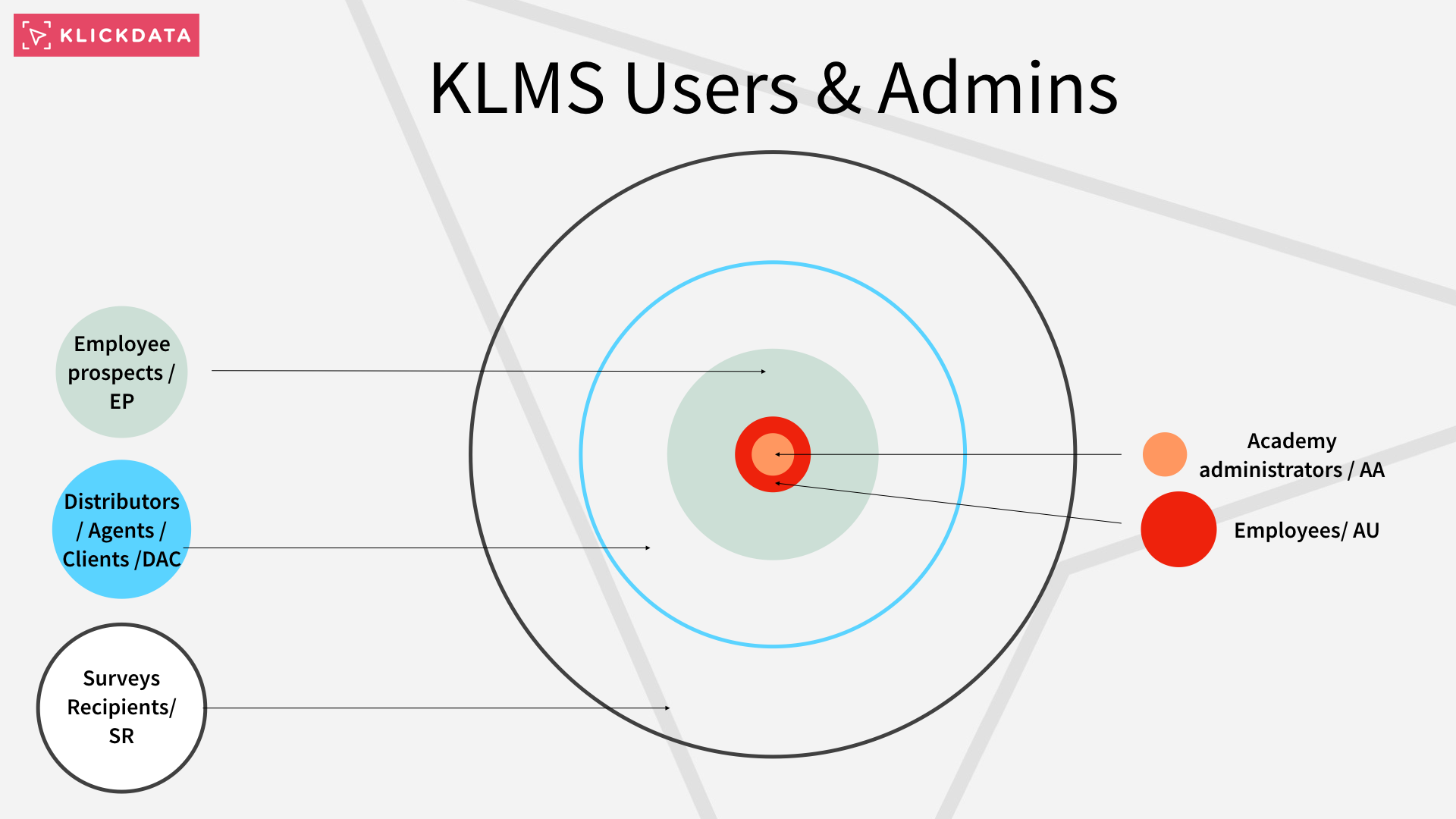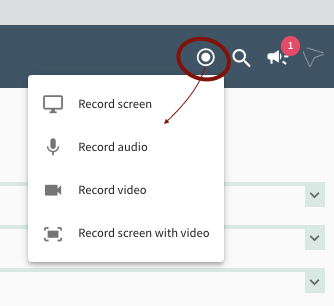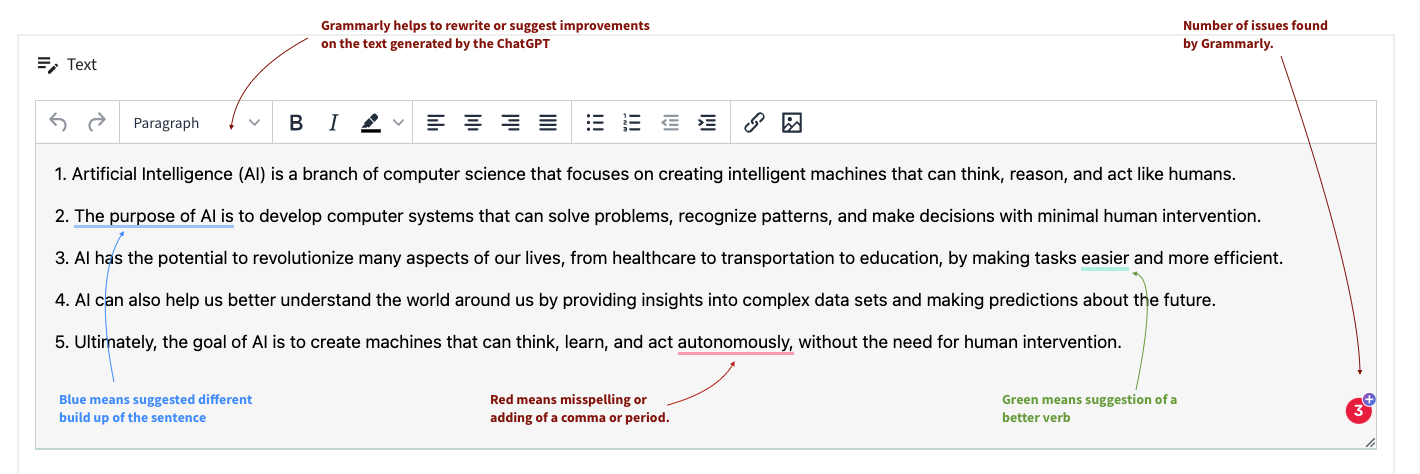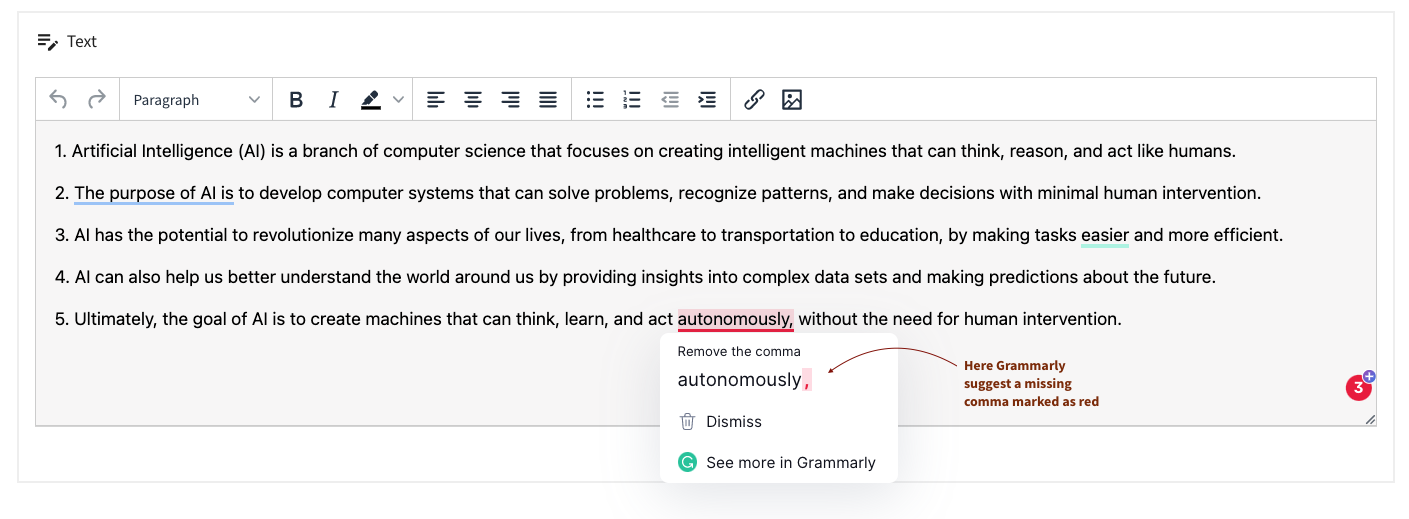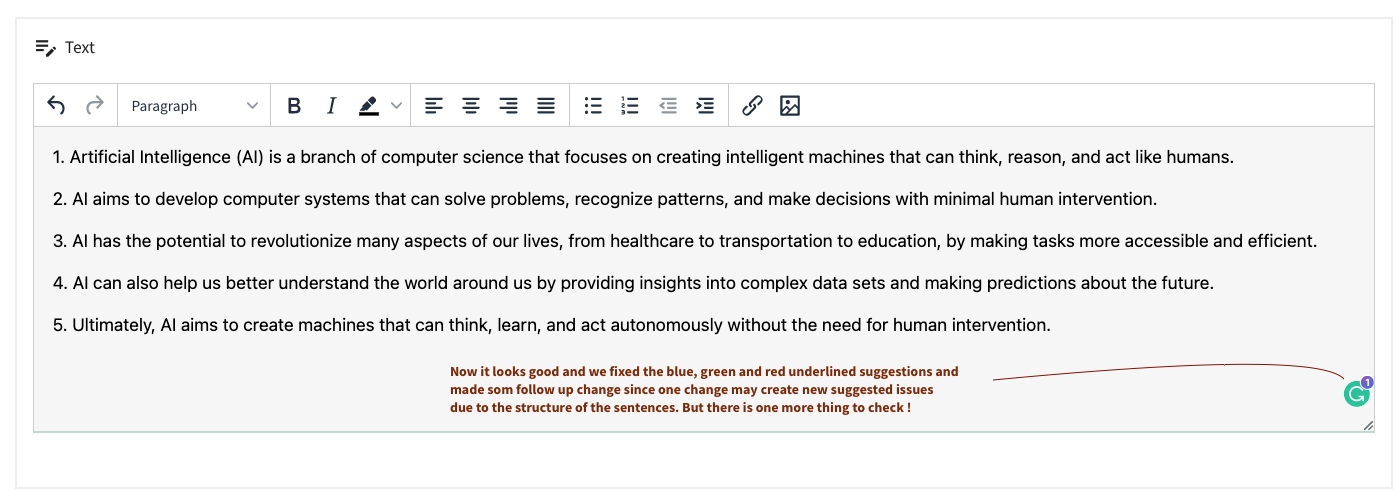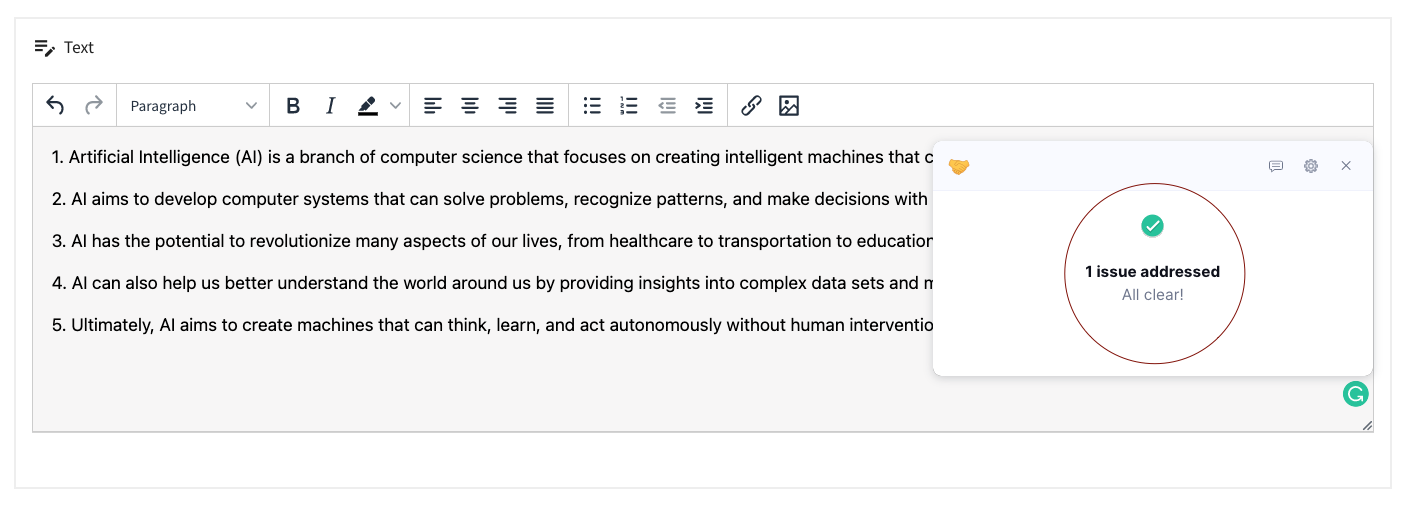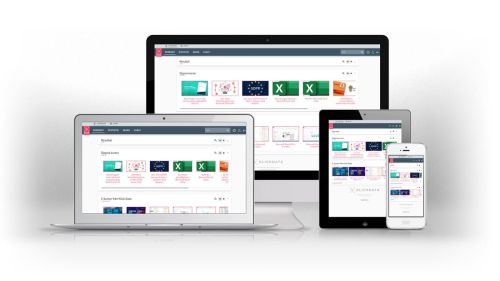Academy
An Academy is an area of the KLMS ruled by an Academy Administrator that has Users or Learners as members that need to log in for the functionality provided in the KLMS system. The Academy types can be Corporate Academy (CA), Educational Academy (EA), Governmental Academy (GA), or KlickData Academy (KA).
A company or organization that acquires a license to run a KLMS Academy (CA) from Klick Data or one of its distributors will have full control over the content provided within the Academy and will have the Company logo and information. The same applies to a GA with the city, government body, or an official department. And in the Educational Sector, An online KLMS Academy (EA) will provide the principals, professors, and teachers with the tool to teach students online and onsite with the Content of Material, Tests, Exams, and Surveys.
In the KlickData Academy (KA), under the KlickData brand, individuals and small business owners can use the Open Courses created by publicly available Tutors. And also take the e-courses that Klick Data has produced. Tutors can produce and sell their courses, thus making the KlickData Academy a marketplace for people who want to teach online or have produced courses of quality others can be certified in. No matter the subject.
Academy Administrator or short Admin
An Academy Administrator (AA), sometimes called Academy Account Administrator (AAA), organizes and supervises content, users, and progress in the learning management system KLMS. The Academy Admin can create users and assign resources within the database of material, tests, surveys, and e-courses. The AA can assign Course Plans to a user, a set of users, a group, or groups. Admins can also send emails and reminders to the above. And see group results and statistics. (Students or Staff employees). See Master Admin and Users. The types of AA van be CAA, EAA, or GAA.

Add document
Adding a document to KLMS means that this material is kept within the walls of KLMS and is not seen or reached by any outsiders. Documents in the form of Word files, PDFs, videos, etc., can be uploaded, and this material can then be studied by the users and be part of a Course Plan. See Add Link
Add link
Add link is used when you like to add material in digital form from the Internet. This link does not need to be private. It is public. Since most of the content that needs to be learned is already on the web, the idea of adding a link is to validate this information when it is turned into knowledge. And the admin can follow up that a person, a group, or the whole organization shares the information. Just sharing information is in no situation a guarantee it's been opened and understood.

Assign
When you assign a Course to a Learner / AU (=Academy User) as an admin, you assign a Course to this AU to a mandatory end date. This Course is then mandatory for the Learner due to the requirement of the government, business practice, or the wish of the Manager or the Board of directors. If the AA recommends a Course, it has no end date to be completed.
Only a AA can assign a Course, but a friend can recommend you a Course on social media, by email, or within KLMS.
You can stream a resource like a Course, Test, Survey, or Event in the Sections. You can also stream on popularity (by the number of taken times), tags, categories, and recommendations. Or the order of your own priority, Sections are the window through which you present the vast content in the database of KLMS to the Learners for them to use the KLMS to learn new fantastic knowledge.
Authentication
Authentication is verifying who someone is, whereas authorization is verifying what specific applications, files, and data a user has access to.
Author
An author is a person who puts a course together. Like a DJ that puts songs together in a playlist, the author puts a course together. Without being involved in the creation of the material itself. The author as the role is different than the instructor (asynchronous learner) and teacher (synchronous teacher)
authentication
Authoring Tool
A tool to produce courses within the KLMS. To create with the Authoring Tool, you need to have the Admin privilege set by the KlickData account representative at your company/ organization/educational institution.
AWS
Amazon Web Service. A cloud hosting solution that provides services like the KLMS and other international services online.
Blended learning
Learning that both contain onsite training in a classroom and online training in front of a computer or smartphone.
Branching
When you do a Study as an extended Survey, some answers like Yes and No lead you to different parts to continue. A Yes answer on Question 8 may lead to skipping Questions 9 and 10 and letting the user go directly to question 11, whereas answer No let the user answer 9 and 10. See Study
Category
A category is a tag or index in which a material, test, or survey can be found. You can attach material, tests, or surveys to multiple categories for the users to find the proper subject when to take a course or involve this material, test, or survey into a Course Plan.
Case
A case is an assigned task that a teacher will review and monitor. It can be for the Learner to write something, record something or do something and post it to the teacher for a review. (sv. Uppgift). A Case is sent through the Message Center.
Certification
A test that has a grading system with more than two options in KLMS has a Certificate as the result of a user learning effort. If a test has two levels of grade, it's called a Diploma Test. If it has more than one percentage level, it's called a Certification Test. Example Failed 50% or less correct, Passed 50-90% correct answers, Good over 90%. The levels are set by the Course Creator in a Grading System.
Chapter
A chapter is a part of a course with many lessons. It is also called a module in the KLMS terminology.
Class
A class is a group of Students. It can be a department of an organization.
Clients
A client is a customer of Klick Data or a Distributor of KlickData. A Client has its own Academy and Academy Administrator, groups, and Academy Users. A client decides what access to defined content is regarding Academy User's Courses, Tests, Surveys, and functionality within the Academy domain.
Closed Course
A course specifically made for an Academy and a specific set of users, groups, or all within companies, and these courses can be taken only for a specific period. The Opposite of Open Course
Collection
A collection is a gathering of Resources. Collections can be put in a Folder or in a Section. In KLMS, you can add any item to a Folder or a Section by hoovering the row in the Listings.
Coach
A coach is the same as a Teacher. The coach is an active part that the student, learner, or user can interact with synchronous communication.
Color Code
When you create a new group in KLMS: You can input a valid color code and give the group a color so it's easy to separate them visually. A color code is then added from the hex system; see https://www.color-hex.com/
Count
A part of the statistics is when you count the number of events of something.
Course
A course is a combination of Material and Test: Something (link, document, Text) to be learned and then validated (Test) that it has been learned. And to be combined with a Survey to get feedback if it made sense and if the student learned something of value. Technically it could consist of only a Test or a Material. Or an Event.
Ex. If the user clicks on the OK after he or she takes part in reading a document (like Terms of Use): He has taken the course item "Terms of Use" and if this is all course items in the Course: The Course is technically over and "passed".
Ex. 2. If a Course consists of Course Item 1: Material "Jack Ma Youtube video" and Course Item 2: "Alibaba Introduction Test", the Course is completed when the user accepts he has taken part in the video (despite perhaps not viewed it, but KLMS will have notified if open) and taken the Test, despite not passed the limit of Diploma based on the Grade System in the second item: The Test "Alibaba Introduction Test".
Course Items can be mandatory or complementary. A teacher can list books to read offline for the student to take the Course, but it's up to the student to buy or to lend the books at the library and to read the content. KLMS can not "proof" the student has opened the book, read, and understood the Material. A test can give the verification of knowledge required.
For more information, see the separate article about Course in FAQ
Course items
Course items are parts of the Course; Plural for Material, Tests, Events and Survey as a group. Ex. "The Course items are 7 in total and are divided into 3 Materials, 1 Event, 2 Tests, and 1 Survey".
Course Management System
A part of a Learning Management System that focuses on the creation of courses with authoring tools.

Course Plan
A course plan is a series of actions planned by an administrator with multiple Courses and a timeline for completion as assigned by an administrator. A course Plan has a user, or a group or groups attached, and a timeline and is combined with emails sent from KLMS with reminders to activate the course/ courses. The admin can follow progress on a user level and a group level. Users can produce a course but not a Course Plan.
In Course Plan, you can create an activity that the user can/must perform and which you can follow up on with a reminder email. It could be one or many partial assignments that contain for example, going through the material, e-course or tests, and studies/ surveys.
Courseware
The term courseware is an older term used in the Licence agreement software and refers to "videos (e-courses) from Klick Data AB in the form of CD-Rom, DVD, or VHS format or another form of digital equipment." In this "another form of digital equipment, the future when it was written implied use on a SAAS (Software as a Service) platform such as KlickData KLMS and Klickportalen K3.
Dashboard
A landing page gives the user an overview of the KLMS system and the progress made in the Course Plans. Different roles have different Dashboards in KLMS.
Distractors
A distractor is an incorrect alternative in an MCQ. Typically an MCQ has four (4) alternatives. One (1) alternative is normally correct. And three (3) are usually wrong. These 3 incorrect are called distractors.
KLMS questions can have many but no distractors, with multiple correct answers. This is different from the WikiMaster system and the WOK dB, where it always is 1 correct answer and 3 distractors.
In KLMS, you get different points depending on how many correct alternatives you enter. If a, B and C is correct and "All of the Above" is the alternative in D, you will have more points if you answer A, B, and C or D than if you only have answered A or B.
To write good distractors is an art. Great MCQs have great distractors. Correct answers are very easy to enter. It is to fact-check. To enter great distractors is much more complicated. They need to be good as being the possible correct answer. Not too easy, not too hard. Reasonable. But not impossible. Alexandria is the second-largest city in Egypt. But what would the distractors be? Unknown cities in Egypt? Or large cities in other neighboring countries? Or tourist attractions in Egypt? Many quiz shows, such as "How to be a millionaire," expose. Sometimes you need to call a friend because the distractors are so good.
Diploma test
A test in KLMS can be of three (3) kinds. Participation, Diploma, or Certification. A Diploma Test has a pass limit set by the Creator. Either you pass this limit with a percentage of correct answers or points made correct and get the Diploma, or you don't pass the Diploma test limit and do not get a Diploma. If failed, you get a Participation Note in the system. The Academy Account Administrator or the Course Creator can set the Diploma Test certifier. The Diploma level can be set to zero correct answers by the Creator, thus upgrading participation to a Diploma. See more in What is a course?

DPIA
Data protection impact assessment. A process used to identify and evaluate the potential risks to the privacy of individuals resulting from a proposed processing of personal data.
Educator
A person who educates and transports knowledge online or onsite (face-to-face) to a person or a group asynchrony or synchronously. The different types of educators are defined in KLMS as instructor (asynchronous) and teacher (synchronic). The head of a Course deciding the End result / Grade is technically an educator; see tutor and author. See the comparison article at FAQ
E-course
An e-course is, in KLMS terminology, a video tutorial with a teacher in front of a camera explaining a subject like computer software skills. This e-course is historically typically produced by KlickData with a video player that makes it possible to navigate within the video on searchable subjects and a menu structure using the KlickData course player. Since 1992 KlickData has produced over 500 video tutorials (mainly in Swedish), and the same structure has been applied to the Swedish market. In the 2020s, most eLearning in KLMS is produced without KlickData being the producer. A short name would be "a high-end produced course." Customers can order courses produced by Klick Data as a company or produce an e-course with the authoring tool. Read more in a separate article about our story and heritage as a company within the EdTech industry that has gotten us a Global Award for our achievements.
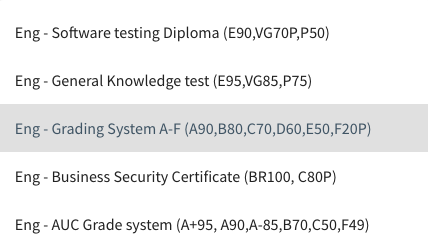
Editor
An editor is the course creator. It's the Author. This is not the same role as the Publisher. The Publisher is the "Editor-in-chief" of the Course, while the Editor is "the journalist." An editor can be the Publisher and publish the Course in the Academy he has access to or into KOL (Klick Data Open Library).
Event
An event is a part of a Course with a location in time and space; it can be an onsite event, like a gathering in a classroom. It can be a telephone conference, a webinar taking place, a Facebook Live event or Microsoft Teams, or a Zoom video conference. Being a part of a Course, an event can be mandatory or complementary. An Event can be alone or as a part of many other course resources. A course can have many events in the Course Plan.
Filter
A filter is a specific part of the search in KLMS. When you search for a tag, you click on the filter for tags to limit the search from being global. Filter helps reduce the time to find the resource you like.
Flipped classroom
The flipped classroom, also called Flipped Training, is a term associated with blended learning but even more so. The online courses are used actively in the classroom, and often flipped training start with the homework and an online assignment and are summarized in the classroom. In the KLMS, flipped training is connected with the resource Event as part of a Course with a Teacher involved who actively gives feedback and is separated from the role of the oneway communicator of the instructor.
Folder
A folder is a container with many resources of different kinds. You can add Material, e-course, course, SCORm, Survey, Test, and Event in a Folder, and then as an admin, allow this Folder to be visible for a Learner to be searched for within the Academy or viewed in a Section.
Global Search
A search in KLMS for finding a Course can be done in sections but also in Global Search: Depending on user roles: Global Search can find and display: Users, Groups, Courses, Surveys, Tests, E-Courses, Materials, Folders, Sections, Tags, and Categories. The results will be displayed in Sections.

Grade system
A Grade system is a level from the teacher making a Test Passed. If you have 75% correct as a level for Diploma, the admin sets this. Perhaps A+ is 95%, A is 90% correct, etc., and Fail is 40%. The Grade level sets this—so different Grade Systems for different purposes and clients. You want a Manager in Chornobyl to have 100% correct on the test of how to run a nuclear plant while reading an Environmental Policy or a Terms of Service for Software with just a click of "Read" without a test.

Group Admin
A group admin is a teacher or a manager at a lower level than the Admin in KLMS. An admin sees the menu above the Dashboard. Above a Group admin is the Main admin, and under is a User. Group admins can have a set of different admissions to the system ruled by the Main administrator's settings.
Instructor
The instructor in the Course is the person who is the narrator. He or she will lead the Student or Learner through the Course. He can be the Teacher, but the teacher is a different role per definition since you can interact with a teacher during an event or send a teacher an uploaded assignment. The role of the instructor is more like David Attenborough; he leads you during the course, but you can't ask him any questions and get his feedback. Instructors are oneway communicators of knowledge in the definition (asynchronous). Teachers are, on the other hand, two ways (synchronic). In a Course, you can have a Teacher for an event and another Instructor for a video. Hence, we at KlickData separate the roles and use the words Instructor and Teacher differently. Tiger Woods can teach anyone to swing a golf club on YouTube, but he can't tell you how to fix your swing from where you are currently unless he is a teacher and stand next to you on the tee and give you personal advice. The EdTech industry at large does not separate these roles clearly enough. Hence the need for onsite education or at least live events and webinars on Zoom or Microsft Teams will always be relevant.
K3
A shorter name for Klickportalen K3. The first generation LMS from Klick Data, with 1.8 million e-courses served. The predecessor to KLMS. One of the domains of Klick Data is http://k3.io
Klick Data
Klick Data refers to
a. the Swedish public company Klick Data AB (publ), incorporated on Dec 30, 1988. Since 1992 working in the educational digital industry, today is known as the EdTech Industry.
b. The company Klick Data has produced e-courses and created a SAAS for hosting courses, e-courses, tests, and surveys for online training that has become the same name for millions of Swedes. "KlickData " is therefore commonly known as the SAAS it provides. A klickdata-course is for many old clients in Sweden from the past, the same as a "video tutorial in software training." Delivered on a unit.
c. The common name for the 2nd generation platform is "KlickData KLMS."
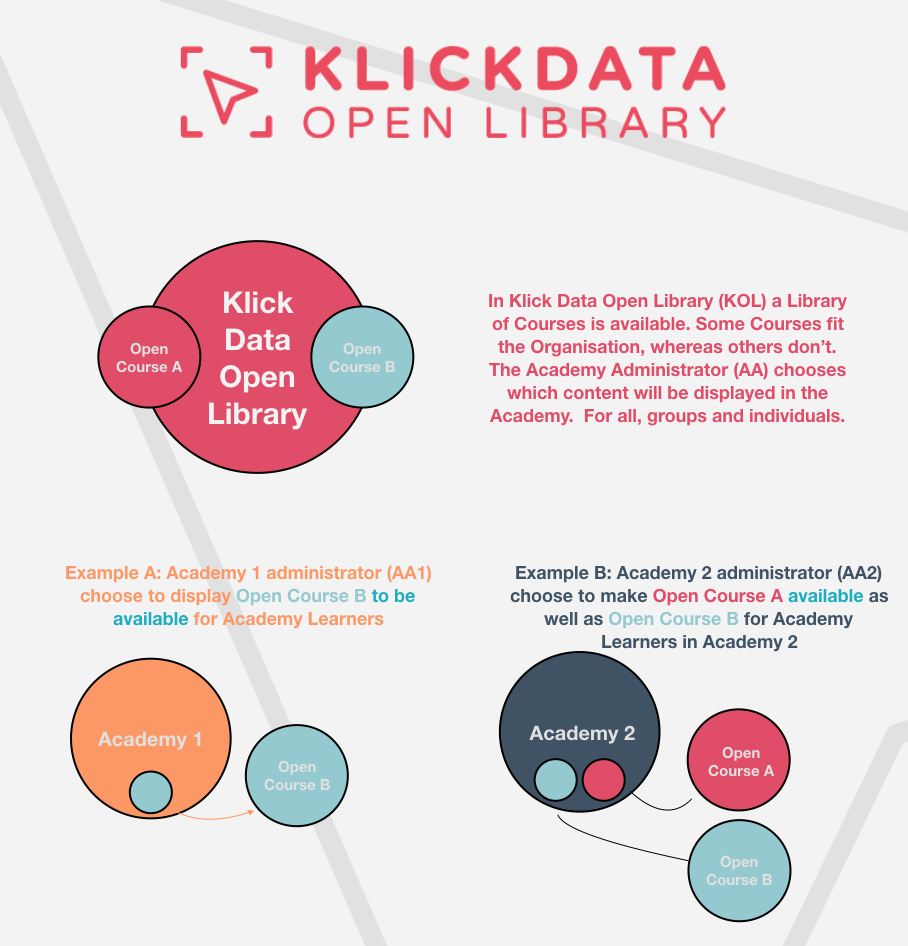
Klick Data Open Library
Courses within the ecosystem of Klick Data that administrators, tutors, and Learners produce in KLMS and make accessible globally, so one Academy can share content. For the general good (non-profit=free) and commercial reasons (for-profit by setting a price on the Courses). It is Klick data Public Domain.
Klickportalen
Klickportalen or Klickportalen K3 is a SAAS for KlickData launched in December 2004. Since the start, 1.8 million e-courses have been delivered in the Swedish market in this Learning Management System (LMS). See K3
KLMS
The abbreviation for KlickData Learning Management System is also called KlickData KLMS or, among many just "KlickData" "We are using KlickData."
Language
Choose menus in many languages in KLMS. The menus and structures are currently in April 2022 and have been translated into Arabic, English, French, German, Italian, Spanish, Swedish, Yoruba, Portuguese, Ukraine, and Tamil. (11) Anything that needs to be learned and validated that it has been learned is possible to use in KLMS.

Learning field
An in-depth description of the answer, why the answer was reached, and perhaps a description of why some of the alternatives listed were wrong for the user to understand the context and learn. The field is also meant to get to the correct answer by linking it in the right direction, like Wikipedia articles that might cover the information needed for understanding more and having the correct answer next time. Sometimes also referred to as Information. Currently (April 2020) not yet in KLMS but WikiMaster and K3.
Lesson
A lesson is a part of a course. It consists of one or a few tasks in KLMS. A lesson is more of an asynchrony instruction than a task. In a lesson, the learner gets information without their involvement in making actions. You listen to a lecture in a lesson, whereas you might be involved in something you need to do in a task. Synonym to a Chapter.
License
The word "license" implies the right to allow a person to use the courseware or the system KLMS or K3 as a SAAS. "The number of licenses corresponds to the number of purchased units or the number of licenses obtained according to a specific agreement with Klick Data AB. " This is a description from the Licence Agreement that units and licenses were connected. In a Site License agreement from Klick Data, the number of Academy Users is set by the Site License agreements and the Services provided in the SAAS.
LMS
Abbreviation for Learning Management Systems. Platform online for learning. E-learning. Online Education. A system for organizations to educate and validate knowledge among staff, distributors, and customers to reach higher ROI.
LXP,
Abbreviation for Learning Experience Platform. A system for learning designed to target the individual learning plan and ensure the company's role is in line with other companies' expectations for knowledge experienced. If one position in the company has an experience profile and this profile is extended to another similar one, the LXP will suggest Courses to be taken for the user to match the position. This will enhance the staff members that the company provides the necessary skillset for him and allow them to move to other positions in the organization and the World and not lag due to a weak digital online education strategy. Its a buzzword, of course, like many others, but it forces the buyers of an LMS to make sure the functionality of Open Courses, Recommended Courses, and Assigned Courses are available and that AI will be used to suggest similar Courses available for the individual to move on and become more attractive to a future employer. It's connected and part of the CSR strategy.
Make Public Courses
When you are finished with the Course creation process and have added Study Material, Tests, and Surveys as Course Items, you can Save the Course. You then have some options. When you click "Save,"; the Course will be given a name with a timestamp, and you can go back and edit it later. When you click on Publish and have the option of Make Public checked: The Course will be available in the Library for others in the Academy to use without the assignment from an Academy Admin. If the Course is to be assigned: You can uncheck the Make Public and make the assignment to an individual Academy User or many Academy Users or assign it to a Group, like a department or a class. You can also Assign to all Academy Users in the Organization.
If you don't assign at first due to the fact you don't know the time and date. You can Publish it to be Taken or click Save to make the Course Stay Private. Picking up a Course for later assignments is easy. Just go to My Courses to see your created Course or pick from the Library. You can change content by copying the existing Library to make alternations.

Master (Settings)
Master Admin (MA) is the Head of the whole KLMS System: The KlickData Master is setting up new customers and Academies. It's not for a normal Academy Admin or User to touch. The Customer's head is an Academy Administrator: A school principal or an HR department Manager. The customer's users or admins do not visually see this part. It's for Klick Data and its Distributors. See List of Master Admin functions
MCQ
Abbreviation for a Multiple Choice Question. A question with choices where one or many choices are the correct answer. Used in many trivia apps and game shows and has a significant advantage in the learning process. In KLMS, Over 504000 MCQs are available to retrieve in the creating process of creating Quiz and Tests by the index of Wikipedia articles. MCQs are both used in Surveys and Tests. MCQs can be created freely in KLMS and contain images related to the MCQ or alternatives. MCQs can be displayed with a random display option of alternatives in random order or displayed in the order of how they were created.
Message
A message is sent inside the Message center in KLMS. Chat, Case and Tickets can be created, and dialog with text and attachments can be made similar to Skype Chat or email within the KLMS system.
Module
A module is a set of many tasks within a Course. It's the main part of a Course. Tasks can be divided into modules or separated without being divided into modules. It's the plural of tasks. A basket of parts in the Course. A chapter or a lesson can be divided into many parts.
MOOC
Abbreviation for Massive Open Online Courses. A wide collection of course content. Like Klick Data Open Library, KOL.
Nano course
A nano course (nanocourse) (swe. nanokurs, nano kurs) is a short learning session. They are used as a term for learning on demand. A synonym is a micro course (micro-course, microcourse). There is no exact definition of the length of a nano-course, but an estimate would give it no more than 3 minutes. The "shortening" of content has recently been a trend on the Internet with Tiktok, Reels, and Shorts on YouTube. It has given Edtech the nano course as a buzzword. Technically, a Material pr Lesson in KLMS is a Nano course. Synonyms for Blocks are taken separately. You could argue that many Nano Courses in plural will render a full course.
Open Course
A course created by a user or admin can be opened. An open course is a Course created with no date or time restrictions. The Course is Open in the Library for the Academy Users to take the Course at any time. An Open Course can be taken without the assignment of an admin inside KLMS. The course is open to be taken by other users or groups. An Open course can be public in a sense the Course is open not only within the company or organization account but for all other accounts within the KLMS universe. The opposite is the Closed Course.
Organizer
An organizer, in the terminology of KLMS, is a person who puts an event together. This person is usually included in the learning process, i.e., in the transport of information from a person who knows the information and the person who will soon know the information. An organizer can be the teacher or the tutor (primary teacher) of the event, but he or she can also be the host as a person or the enterprise or company that hosts the event without being involved in the teachings. Just as an author of an online course (like a DJ) can put the course together without being an instructor or teacher in any of the lessons or modules. ("no music produced"). Hence: An organizer can bluntly speak "know nothing" and have other persons presenting a webinar, a conference, or a speech at a live event.
Participation
If you take a Course in full, you get a Participation note in the KLMS for the effort. Participation is the lightest form of Grade resulting from a Course or a Test. The creator can make different tasks and parts in the Course Plan, like Materials, Tests, and Surveys. If the user starts a Course item and completes this item, he has participated in this part of the course. The most accessible form of Participation is to click Start, and when the user feels he has completed the task, he clicks "Done." If all course items are taken, the entire Course is done, and the user has a Participation note for the full Course.
If a Test is set with a grade System of either a Diploma Test or Certification and the user does not pass the limit set for a Diploma or a Grade, the Participation "grade" is given to the user in KLMS. A failed test renders Participation in this case. Statistics of started and completed courses, tests, and surveys are handled for comparison over time and semester for the Academy Admins. In groups and the organization. Participation is a measurement of usage.
Often, the managers send information to staff members and do not need it for testing. The information on how many have taken part in the information and read the information is sufficient. And it gives the people within the organization or outside, like applicants, distributors, or customers who have not read some vital information, a reminder.
PDC
Abbreviation for Participation. Diploma and Certification. The result of a Final Test in a Course.
Presenter
A presenter is a person that orally or in video presents (the course), and he or she can be the author, teacher, or instructor, but also a separate person. A presenter introduces the course with the goal and the content and also wraps the course. In the Klick data e-courses (video tutorials) format, the presenter is the instructor and introduces and wraps the modules. In Swedish: the PÅA (swe: påannonsering) is the term for the introduction part, and AVA (swe: avannonsering) for the wrap. A course with a Presenter is like a gift with wrapping. It adds a value that can't be easily described as necessary from a logical and rational viewpoint, but it's like a room with or without flowers. You miss it when it's not there.
Publisher
The Publisher is the responsible person or juridical organization behind a Course. It is not the same role as the Tutor, Instructor, or Editor. They can be the same person, but not always. A Publisher must have admin privileges in KLMS. The Publisher can moderate a course created by an Editor if the Editor has a lower privilege in KLMS.
Q
Short abbreviation for Question. Usually, an MCQ is a Multiple Choice Question. Used in Tests and Surveys.
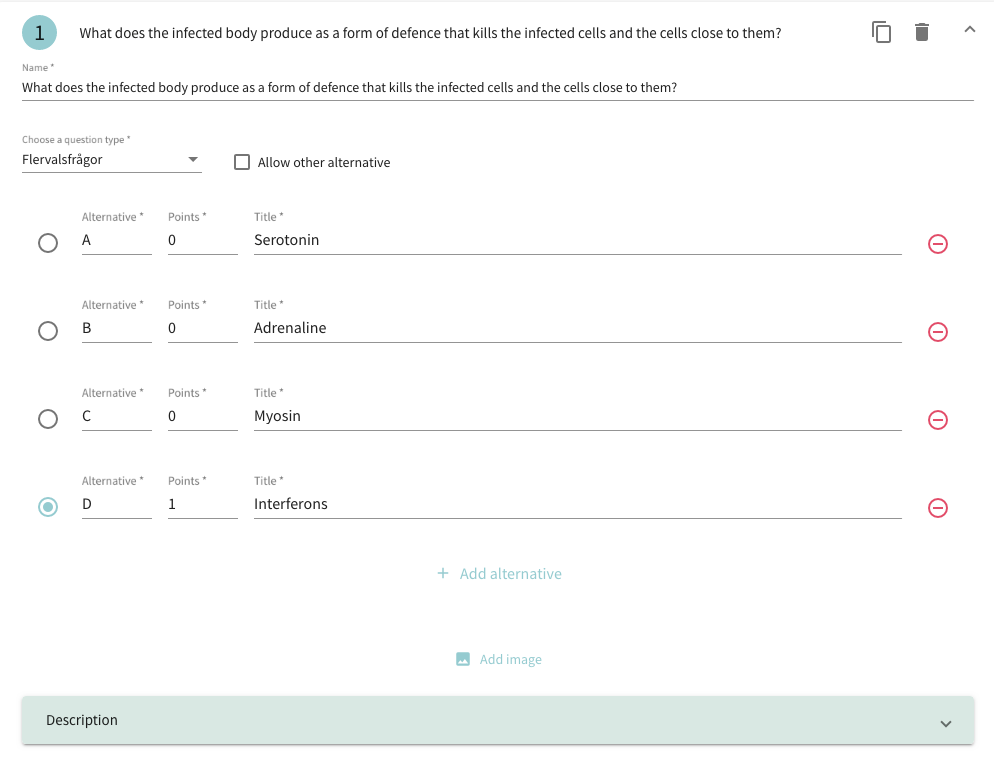
Question
A question in KLMS is a part of a Test or a Survey. Questions can be multiple-choice questions (MCQ) with one correct answer (also called SCQ) or multiple correct answers. The creator of a test can set different points in each alternative. These alternatives can even have negative values. Questions can have 0-9 alternatives. A question can also be a fill-in question where the user needs to write an answer. The question can have a description and in-depth information before the question is to be taken/ answered, and learning information after the Question or test has been answered for fact-checking and more learning to fill in the missing knowledge.
Question Description
A Question Description is a field that deepens the background and information for the user to solve the question. It could be a text to read. A mathematical problem or a visual picture, or a combination. Or a long question that is longer than the usual question displayed on a mobile or smartphone, hence not displayed together with the alternatives.
Question Description

Question image:
A question (MCQ- Multiple Choice Question) is displayed for the user with an image that the test creator can upload and attach to the question. An image can also be added to a Quiz=Test

Quiz
A Quiz is technically the same as a Test. KLMS use Test in the Courses. The test is the Course Item that normally will lead to a reward such as Participation, Diploma, or Certification (PDC). Test sounds more serious for many people and more academic. Quiz sounds more trivia. It's in the eyes of the beholder. KlickData has chosen the terminology of the Test for the part where you end the Course. And have Quiz as a part of the Learning Process. Study Quiz is a learning event rather than an Examination Event. Both tests and quizzes are defined as Questions (MCQ) collected.
Recipient
The email address of someone who is to receive a mail about a Course Plan
Reminder Body
When you send an email to a user and remind him to take a Course or a Task within a Course Plan, you write a text in the Body of the message. Hence the term Reminder Body.

Reorder
With the reorder function, you drag and drop the Questions in the order you like them to appear in the resource, like moments, materials, lessons or modules in a course or questions in a test.
Role
In a learning management system, different roles of users have different authorities and access to information, menus, content, functions, and parts of the system. KLMS is no exception. KLMS roles are explained in a separate article about roles. Other systems have different definitions.
SAAS
SAAS is an abbreviation for "Software as a Service". The terminology refers to delivering software over the internet based on a subscription model. In the EdTech business, Klick Data has been since 1992 and has SAAS as its core business model since 2004 at the launch of the platform K3.
SLA
Service Level Agreement. Definitions of the number of services running.
Additional Definitions within SLA: includes
“Deployment Minutes” is the total number of minutes that a given API Management Service instance has been deployed in a system like KLMS during a billing month.
“Maximum Available Minutes” is the sum of all Deployment Minutes across all API Management Service instances deployed by Customers in a given KLMS subscription during a billing month.
“Proxy” is the component of the API Management Service responsible for receiving API requests and forwarding them to the configured dependent API.
“Downtime” is the total number of minutes within the Maximum Available Minutes during which the API Management Service is unavailable. A minute is considered unavailable for a given API Management instance if all continuous attempts to perform operations through the Proxy throughout the minute result in either an Error Code or do not return a Success Code within five minutes.
“Monthly Uptime Percentage” is calculated as the Maximum Available Minutes less Downtime divided by the Maximum Available Minutes multiplied by 100.
"Monthly Uptime %" = (Maximum Available Minutes - Downtime) / Maximum Available Minutes x 100
SCORM
A system within the EdTech industry to export and import content in a format that makes Courses and content compatible across the industry and various platforms used since the beginning of the Century. SCORM stands for “Sharable Content Object Reference Model.” Read more about SCORM. In KLMS, you can import SCORM courses from other systems to maintain and enhance the ROI of previous investments in productions with the benefits of the award-winning system of KLMS. It also gives the clients of Klick Data security to bring forward the courses to other systems (god forbids...! ) in the future.
Section
A Section is a part of the Dashboard with content displayed for the Academy User for the Library of Courses, Material, Test and Surveys to be displayed as well as the Academy Users Progress. It's the landing page parts and starting point for the navigation in KLMS.
Subject/Title
A name of a Course, A material, Test, or a Survey. It’s the Headline of the Object.
Survey
A survey gives the HR department feedback on the course. Was it useful? Was it interesting? Will it change the way forward in work/ the way you do things etc.? But that's just the tip of the iceberg; A survey does more than find out what an individual, group, or organization thinks about a course or a topic in the organization in one or several questions. With a survey, one often uses demographic questions to be able to separate what, for example, men/women, different age groups, or departments have answered. The statistics part of a survey entails using blocks of questions with the same number and similar phrasing in the answer options. It usually contains, at the most, one final question where the participant can leave freely formulated opinions, thoughts, or suggestions.
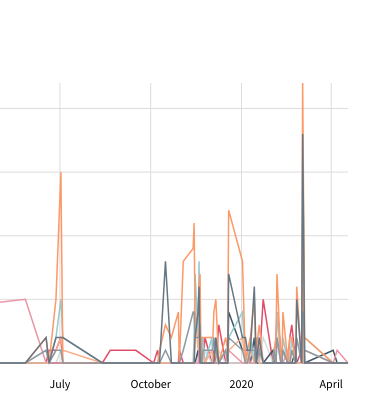
Statistics
Statistics is an overview of the results. In KLMS, users' statistics show their progress compared to the group (a class or division in the company). The admin can also see statistics on a group or company level to track investments in the education taken.
Study
A study is deeper in its structure than a Survey and investigates a specific subject med with different follow-up questions depending on which answer was given in the previous question. In KLMS, you can split a Study and ask follow-up questions if there are yes or no answers. (Ex. Question 7 is answered Yes, then the user moves forward to Question 11, while those who answered No move to questions 8,9,10 for a deeper understanding of opinions, see Branching). With Surveys, the KLMS is giving information from Users to Management apart from KLMS being an educating tool for Management to educate the staff members or Students. It works both ways. In short, a survey lets you know >what a group of individuals think about a question in a more strict form like yes/ no or defined choices. A Study explains how a group of individuals think about a question in more depth with open questions and free answers.
Unit
The word "unit" is an older term from the time when Klick Data content produced by Klick Data was delivered in a physical form. In our Licence agreement, this was referred to as "this agreement is considered a CD-Rom, DVD and/or a VHS/videocassette as well as possible extra HD diskettes.". The abstract use of the knowledge transformation was separated from the physical units that were transporting the digital recordings. Some of our loyal clients have still units in circulation and licenses.
User
A user is a member of the KLMS. Also a synonym for Learner. An account holder. It is a staff member assigned by an admin and can use Klick Data Learning Management System, KLMS, via login with a name (mail address) and a password. Users can create content by adding material, text instructions (Ex. "Attend a lesson," "Read a book"), a link (any digital link on the Internet with some information to be learned), A test (quiz with multiple-choice questions, fill in a test, etc.) or a survey. Users can not Create Course Plans unless being upgraded to a group admin. A user can consume courses and materials. An admin is also a user since he or she can access the KLMS as a Study platform and choose this from the top bar menu system.
Task
An assignment of something the user shall do within a Course. It can be read as an article, book, or link. Or take a test or Survey. It's a single part of a Course. From the user's perspective, the task is technically a single task as a course item. Many tasks put together inside a Course is called a Module. A synonym but not as much used is a lesson. Or Blocks.
Teacher
A two-way communicator of knowledge. A Tutor or Educator. A teacher teaches and educates you as an instructor does. The instructor instructs while the Teacher, in the KLMS definition, is a person you can communicate back within a Course and get feedback from. Onsite, on a live event like a Zoom or Teams meeting, or by feedback in the chat or WhatsApp. A teacher instructs just as an Instructor but also works as a mentor to make information into knowledge and skills. A Knowledge Guide. A person who is active in the Course by being available on chat, setting assignments, or uploading file reviewer. You can make a private comment on a Test from a Learner.
Note: The teacher is not the same as a Course creator, Publisher, or Editor. This person is an active person IRL who will help students to learn. The Course Instructor can be a passive person as a guide inside a course by an introduction and come up in between parts of the course to guide; he shows up on the screen but students cant communicate back to the Course Instructor. You can, however, communicate with the Teacher. So it's a different role and it has implications for Events. (a Learning Experience in time and place) . For example, a course instructor can be a narrator on-screen or off-screen. like David Attenborough (definition of a Course Instructor in the KLMS sense) in "BBC: The Living Planet", but DA is not a Teacher in the sense you can send him your thoughts and he will reply and guide you and tell you what to do during the Course in an LMS.

Test
A series of questions MCQs or other types of Questions put together is called a Test. Technically it can also be called a Quiz (Qz). A test verifies that information in the Study Material is transformed into knowledge in the head of the user.
The test can be a routine Test during the Course. A test is called a Quiz before it is a Final Test. This final test wraps the Course and when the result is given, the Course is done. Depending on the Test Grade System, the Course is passed with a PArticipation Note, a Diploma, or a Certification. This result of a Test is set by the Test creator or the Course Creator or an Academy Admin.
A test can be a Study Tool and a part of the Material in the sense it's designed for learning purposes only. Such a Test is called a Study Quiz. During the Study Quiz (technically a Test from the perspective of KLMS), the user will have information and guidance on what to read and complement information and material in order to understand and answer correctly after submission of the Question is done.
Ex. A Study Quiz has 10 questions. Each Question has learning fields filled in by the Creator of the Test. The Learning field opens after the Question is answered. The learning field has guidance and directs the user were to learn with more information and "the correct answer" (sv. facit). If answered incorrectly, the user can continue to get the right answer filled in and move on to the next. As the name suggests; this is a Study tool and not a final validation or verification of knowledge.

A test can also be a labyrinth test. This is the "evil cousin" of the Study Test. Why so? Well. It's harder. No help is given. The Labyrinth Test assumes you know the Material and are aiming for 100% correct. No learning field is given. If the user answers one question wrong, he or she will need to start all over again. When finishing a labyrinth Test, the user will then have 100% correct and finish time. This requires all knowledge in the Course to be in the head.

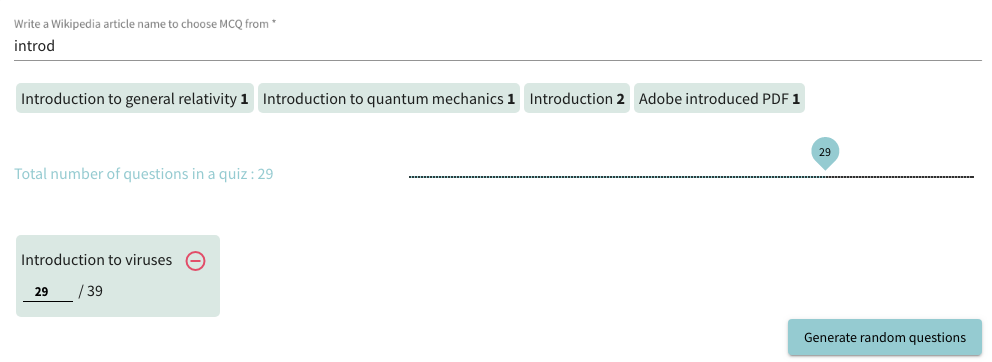
Ticket
A ticket is an alert sent through the KLMS system through the Message system with information about something needing a change. It could be something that does not work, crashes, UX issues, missing information, or weak language. Anything unclear for the users can be alerted, and a ticket is created and dealt with in the message center so the issues (tickets) can be solved by authorized persons related to the ticket. The ticket creates a chat dialog inside KLMS.
Tutor
The tutor is the Main Teacher in a Course. If many onsite events have different teachers, the Tutor is the primary Teacher who hosts the Course or Event. If it's a webinar, he or she sends the link and hosts the video call. A course can have many lessons, parts, modules, and blocks with different teachers and instructors, but only one is the Course Tutor, which can be the Student contact part. The tutor is in the KLMS context, a synchronous part that interacts with the students alongside the Teacher role.
WOK
Questions can be imported at creating a test by the Import MCQ from WOK / WikiMaster function. This database of 500000 multiple Choice Questions is created by the World of Knowledge (WOK) project on top of Wikipedia. Questions imported from the WOK database (dB) are multiple-choice questions with 4 alternatives and only one correct and three incorrect answers. They are indexed by Wikipedia-related articles. Writing a Wikipedia article as a search term displays how many questions exist, and importing the questions makes it easy to create tests based on school and fact-based subjects. For companies, this database will not cover the internal way of standard procedures; thus, creating questions by writing them is the option.
For search : Sv. Terminologi termer vad betyder
